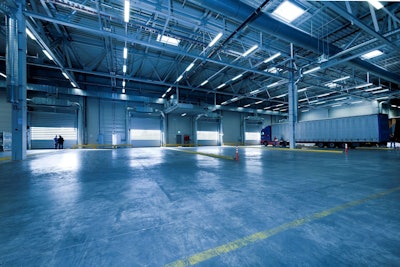
The COVID-19 pandemic and the shelter-in-place policies that ensued have accelerated e-commerce growth and the need for warehouse space across the nation. JLL expects e-commerce sales could hit $1.5 trillion by 2025 — which would increase the demand for industrial real estate to an additional 1 billion square feet.
Prior to the pandemic, JLL attributed as much as 35% of its industrial leasing to e-commerce, but now, with expectations for e-commerce to grow 20% in 2020 alone, JLL reports as much as 50% of its leasing activity already attributed to related operations this year.
“Since 2011, industrial rent growth has been positive and vacancy rates have been at historic lows providing attractive, stable, long-term returns to investors. These solid fundamentals and the fact that e-commerce still has a long runway for growth makes industrial real estate the darling of the commercial real estate industry,” said Craig Meyer, President, JLL Americas Industrial.
According to Digital Commerce 360, e-commerce sales hit $602 billion in the U.S. at the end of 2019. Combined with the new projections, JLL predicts total e-commerce sales could hit $1.5 trillion by 2025.
Prior to the pandemic, JLL attributed as much as 35% of its industrial leasing to e-commerce, but now, with expectations for e-commerce to grow 20% in 2020 alone, JLL reports as much as 50% of its leasing activity already attributed to related operations this year.
“Since 2011, industrial rent growth has been positive and vacancy rates have been at historic lows providing attractive, stable, long-term returns to investors. These solid fundamentals and the fact that e-commerce still has a long runway for growth makes industrial real estate the darling of the commercial real estate industry,” said Craig Meyer, President, JLL Americas Industrial.
According to Digital Commerce 360, e-commerce sales hit $602 billion in the U.S. at the end of 2019. Combined with the new projections, JLL predicts total e-commerce sales could hit $1.5 trillion by 2025.
JLL future state projections in e-commerce sales growth
“E-fulfillment is among the most intensive uses of logistics real estate,” reports Chris Caton, Head of Global Strategy & Analytics for Prologis, the largest owner, operator and developer of logistics real estate in the world. “Prologis estimates these customers require 1.2 million square feet of distribution space for each $1 billion in sales, which means e-commerce requires three times the space as traditional through-put distribution.”
One of the fastest growing aspects of e-commerce has been online grocery. Online grocery exploded during the pandemic with many households experimenting with digital ordering for the first time, and surveys suggest this trend is expected to continue post pandemic. JLL projects the growth of cold storage facilities alone to grow as much as 100 million square feet to keep up with overall demand.
“E-commerce has been one of the biggest game changers to supply chain management since the introduction of the world wide web and the internet,” said Rich Thompson, JLL’s global Supply Chain & Logistics Consulting Leader. “It has fundamentally changed the way consumers buy as well as their expectations for delivery.”
Future state growth assumptions:
a. Assumes 20% e-commerce growth in 2020 (higher given CV-19 impacts) and an 18% growth rate compounded annually 2021-2023
b. Excludes sales of items not normally purchased online such as spending at restaurants, bars, automobile dealers, gas
“E-fulfillment is among the most intensive uses of logistics real estate,” reports Chris Caton, Head of Global Strategy & Analytics for Prologis, the largest owner, operator and developer of logistics real estate in the world. “Prologis estimates these customers require 1.2 million square feet of distribution space for each $1 billion in sales, which means e-commerce requires three times the space as traditional through-put distribution.”
One of the fastest growing aspects of e-commerce has been online grocery. Online grocery exploded during the pandemic with many households experimenting with digital ordering for the first time, and surveys suggest this trend is expected to continue post pandemic. JLL projects the growth of cold storage facilities alone to grow as much as 100 million square feet to keep up with overall demand.
"E-commerce has been one of the biggest game changers to supply chain management since the introduction of the world wide web and the internet,” said Rich Thompson, JLL’s global Supply Chain & Logistics Consulting Leader. “It has fundamentally changed the way consumers buy as well as their expectations for delivery.”













